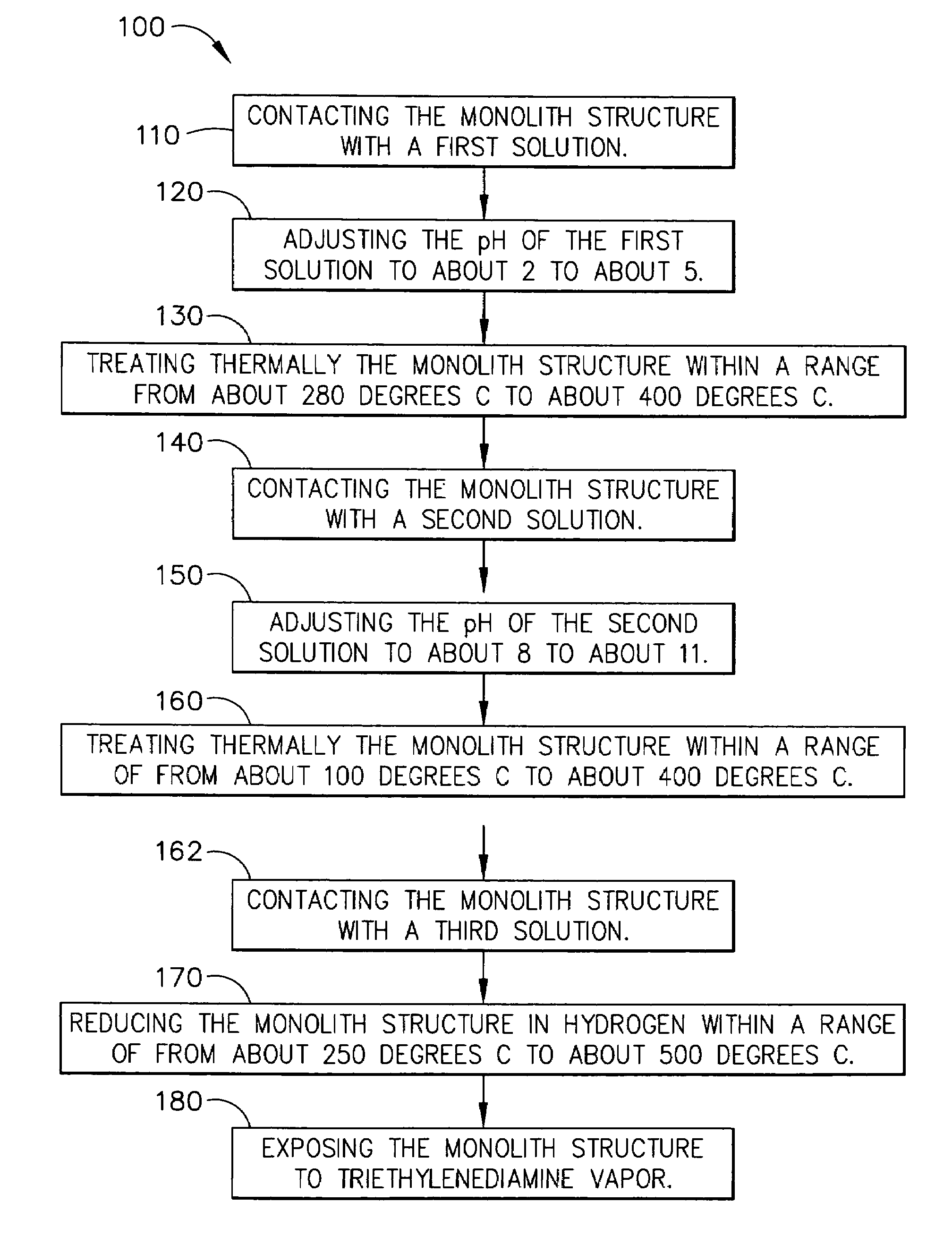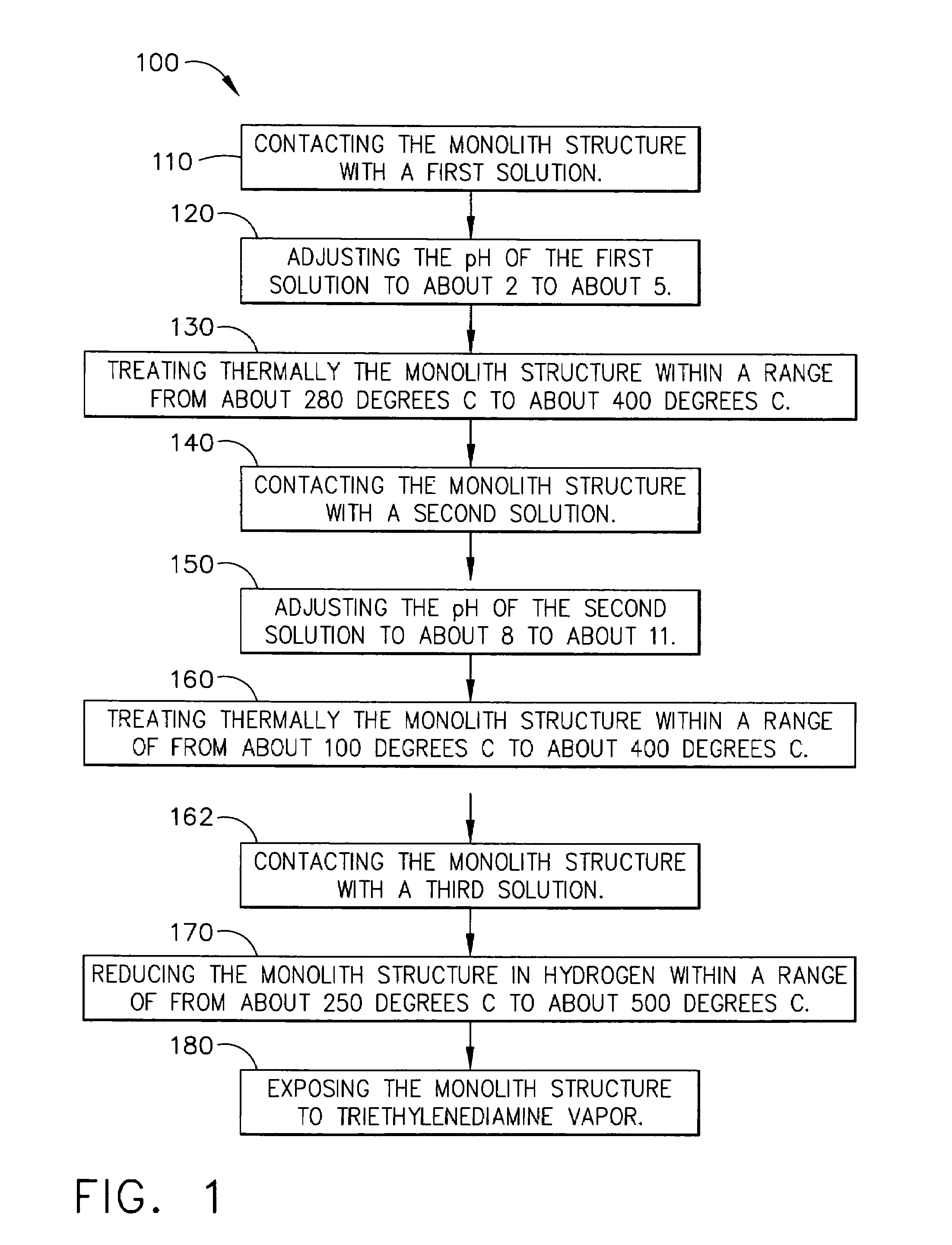Structured adsorbent media for purifying contaminated air
- Summary
- Abstract
- Description
- Claims
- Application Information
AI Technical Summary
Benefits of technology
Problems solved by technology
Method used
Image
Examples
Embodiment Construction
[0023]The following detailed description is of the best currently contemplated modes of carrying out the invention. The description is not to be taken in a limiting sense, but is made merely for the purpose of illustrating the general principles of the invention, since the scope of the invention is best defined by the appended claims.
[0024]Broadly, the present invention provides an activated carbon monolith structure, impregnated with metal species, such that high flow rates of contaminated air streams can be decontaminated with low pressure drop. The present invention may be used in military air filters for removing contaminants, for example, nuclear, biological, or chemical contaminants, from breathing air.
[0025]Because the present invention decontaminates breathing air, at high flow rates and with low pressure drops, the present invention has several advantages over prior art filters and methods. For example, decontamination efficiency is enhanced by the present invention because...
PUM
| Property | Measurement | Unit |
|---|---|---|
| Time | aaaaa | aaaaa |
| Time | aaaaa | aaaaa |
| Time | aaaaa | aaaaa |
Abstract
Description
Claims
Application Information
 Login to View More
Login to View More - R&D
- Intellectual Property
- Life Sciences
- Materials
- Tech Scout
- Unparalleled Data Quality
- Higher Quality Content
- 60% Fewer Hallucinations
Browse by: Latest US Patents, China's latest patents, Technical Efficacy Thesaurus, Application Domain, Technology Topic, Popular Technical Reports.
© 2025 PatSnap. All rights reserved.Legal|Privacy policy|Modern Slavery Act Transparency Statement|Sitemap|About US| Contact US: help@patsnap.com



